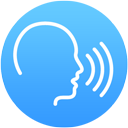









To ensure that you have the best possible visibility, and that your car is clearly visible to others, it is important that you regularly check that all of the car's lights work.
When checking the lights, also make sure all headlight lenses are clean and in good condition. If they are dirty, your visibility will be greatly reduced and your car may also be harder to spot. If they are scratched or damaged the light might cause dazzle, which can be blinding to other drivers.
If your car is equipped with xenon or LED lights you may need to clean the lenses quite often when it is snowing and cold outside. This is because xenon and LED lights generate very little heat, which means that snow and ice does not melt as quickly as it does on cars equipped with halogen lights.
 From time to time you need to check that all the car's lights are working and that all lenses are clean and in good condition
From time to time you need to check that all the car's lights are working and that all lenses are clean and in good condition
Full beam headlights are the car's most powerful lights and should be used as often as possible. However, they must not be used when you meet another vehicle, when you drive close enough behind another vehicle so that the driver could be dazzled, when you risk dazzling the operator of a train, tram or ship, or when the road has satisfactory illumination.
A road has satisfactory illumination when there are no dark parts on the road, or when it is sufficiently lit so that visibility is not improved by using full beam headlights. However, even if the road is lit by street lamps it still may be permitted to use full beam headlights. For example, if it is dark outside and you are driving on a street with poor lighting, it may be appropriate to use full beam headlights, provided you do not dazzle another driver.
 Under the circumstances in the picture, it is permitted to drive with full beam headlights
Under the circumstances in the picture, it is permitted to drive with full beam headlights
If needed to avert a dangerous situation in the dark, you can use the full beam headlights as a sort of "light horn" by quickly flashing them on and off.
Full beam headlights may be combined with any other lights, as you are only allowed to use full beam headlights when you are not at risk of dazzling another driver.
In the event of fog, heavy rain or snowfall you can be dazzled by your own car's full beam headlights. This is because the light is so powerful and is directed at such an angle that it is reflected back at you from water particles.
Dipped headlights are the car's main lights, and are usually combined with parking lights. Dipped headlights are weaker than full beam headlights and only illuminate a limited area in front of the car.
Dipped headlights must not be combined with either fog lights or daytime running lights. Such combinations can produce an unsuitable light pattern with excessive brightness, which may dazzle other road users and reduce visibility due to light reflections.
Modern cars are equipped with fog lights, which are primarily intended to improve visibility in foggy conditions. Fog lights can also be suitable during heavy rain or snowfall.
Fog lights must not be combined with either dipped headlights or daytime running lights.
In daylight you may replace dipped headlights or daytime running lights with fog lights.
In darkness you may only replace dipped headlights with fog lights in the event of fog, heavy rain or snowfall.
 Fog lights must not be combined with either dipped headlights or daytime running lights.
Fog lights must not be combined with either dipped headlights or daytime running lights.
Daytime running lights are weaker than full beam headlights, dipped headlights and fog lights. Their purpose is not to illuminate the road ahead, but rather to make the car more visible to other road users. For this reason, daytime running lights may only be used in good visibility during daylight instead of (never combined with) dipped headlights or fog lights.
Parking lights are very weak and energy efficient lights which may be turned on while driving as long as they are combined with other suitable lights. It is forbidden to drive with only parking lights on.
When driving, parking lights may act as spare lights which mark the width of the car in the event that stronger lights stop working.
You must turn on the parking lights when you have parked or stopped on a road with poor visibility or insufficient lighting, so that other road users are able to see the car.
 The driver who has parked the car in the picture has forgotten to leave its parking lights on
The driver who has parked the car in the picture has forgotten to leave its parking lights on
Some cars are equipped with auxiliary lights, which are always used to amplify the full beam headlights. They must never be combined with any other lights. The most common auxiliary lights are cornering lights, which improve visibility in curves, and long-range lights, which improve visibility over longer distances.
Auxiliary lights are usually connected to the same circuit as the full beam headlights, so that they turn off automatically when you turn off the full beam headlights.
Most modern cars have one or two strong red rear fog lights. Their purpose is to make the car visible from behind when visibility is reduced due to fog, heavy rain or snowfall.
Rear fog lights are very dazzling and must therefore be turned off as soon as you are convinced drivers behind have sighted you.
Brake lights consist of two, or sometimes three, strong red lights on the rear of the car that turn on automatically when you push the brake pedal.
Before any hard braking you should tap the brake pedal lightly a few times to alert drivers behind you of your intentions to slow down.
Rear lights consist of at least two red lights on the rear of the car that turn on automatically when parking lights, dipped headlights or full beam headlights are on. Rear lights are weaker than brake lights.
Reversing lights consist of one or two white lights on the rear of the car that turn on automatically when the car is put in reverse.
The indicators are flashing orange lights that must be turned on before turning or moving your vehicle sideways.
 You must turn on the indicators (indicate) before turning or moving your vehicle sideways
You must turn on the indicators (indicate) before turning or moving your vehicle sideways
Hazard warning lights consist of all the car's indicators, and are switched on by pressing the button with a red triangle. You must always turn on the hazard warning lights if you are forced to stop, due to an emergency, in a place where stopping or parking is prohibited.
It is also permitted to turn on the hazard warning lights when being towed.
Rear registration plate lights consist of one or two lights that illuminate the rear registration plate, thereby increasing the plate's visibility.
You control much of the car's lighting with the light switch. Its appearance differs depending on car model, and in some cars there are many more symbols and settings than those shown in the picture below. However, all symbols look essentially the same, regardless of car model. Below you can see how they most commonly look.

1 - Rear fog lights - May only be used when visibility is reduced due to fog, heavy rain or snowfall. They must be switched off as soon as you are convinced drivers behind have sighted you.
2 - Auto - The car's exterior lighting is switched on and off automatically depending on external lighting conditions.
3 - Parking lights - Must be turned on when you have parked or stopped on a road in poor lighting.
4 - Dipped headlights